- Messages
- 1,808
- Location
- Richfield, WI
Dave,
Don't worry about degrading the genetic quality of my fish! These guys will be just fine with your fish. But thank you for your concern. I'm nor sure how the discussion went from Ben asking if he had a male and female baenschi all the way to bashing the quality of my fish (which neither of you have at this point). Dave, please keep things civil before I get truly upset. The quality of your fish is not in question (and again...I'm not sure why the quality of my fish is being slammed). Only the question of the sex of the fish is being questioned. Personally I view that as a great opportunity for you, Dave, to share your vast experience and wisdom with keeping and working with the fish and teach the rest of us how to properly sex the fish by the same means you are using. You state it's a pair. OK. Why get upset about it? Time will quickly prove what sex the fish are. No need to get this upset about it and throw a fit. Just let the fish prove you right!
F30 Dave? Would that be generations removed from the first time the fish was exported? That might be close. A little high I think, maybe more like F20, but not out of the realm of possibility.
The fish Ben contacted me about are wild caught A. baenschi that were sent up by Mr. Panduro. I agree with you that the exact colors and to an extent marking will vary from collection point to collection point. I remember back in the early 1990's getting panduro and nijsseni in at the same time along with a third "species" of fish that looked to be an intermediate between the two other species! All wild caught fish and all exported seperetly from each other (each imported as it's own distinct fish).
Below are a few pictures of the baenschi stock I've been bringing in. The male would not come out and pose so I had to pull him out of the tank. Trashed his colors but at least you get an idea of what he looks like. And please pardon the "Peru Black Spot" that he has. A feature common to see in wild Apistos out of Peru that does not show up in their offspring in my experience.
Male (please note the lack of black coloration on the leading edge of the ventral fins)
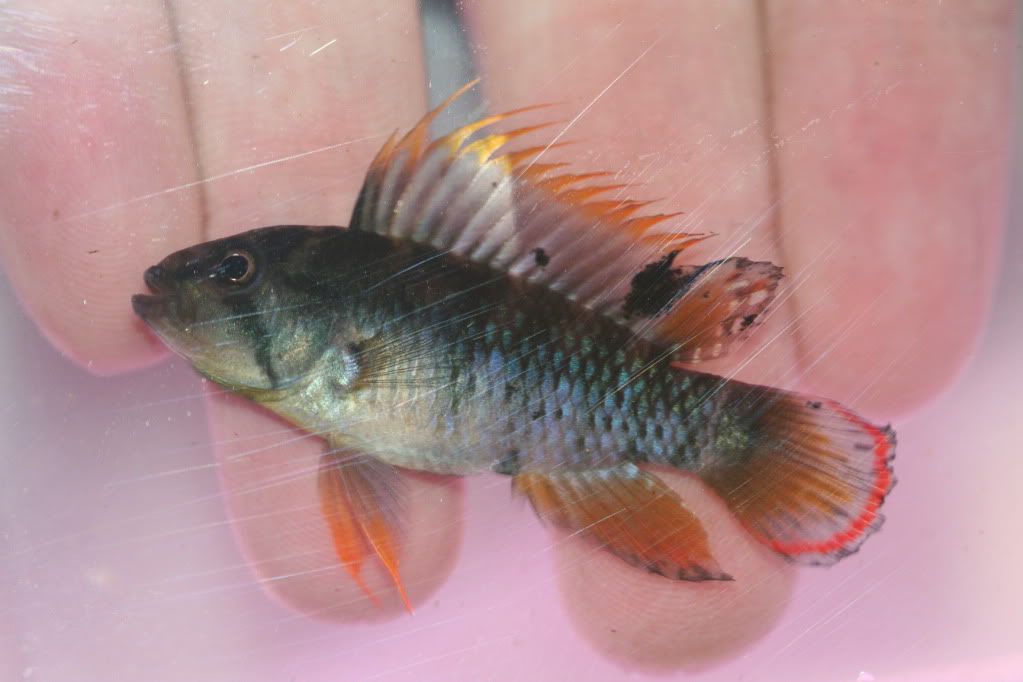
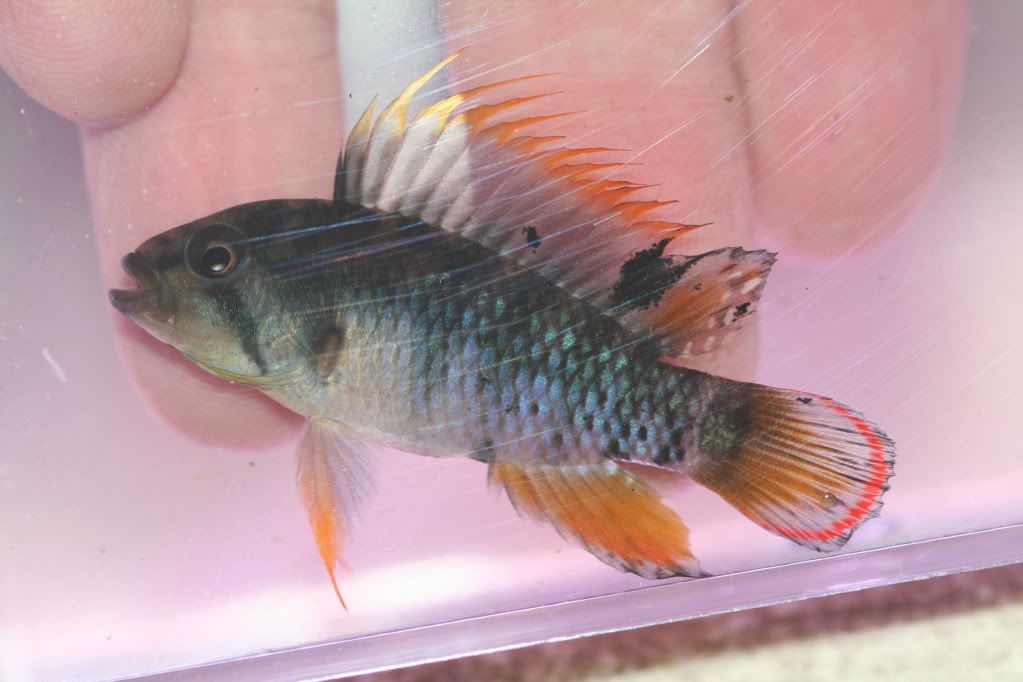
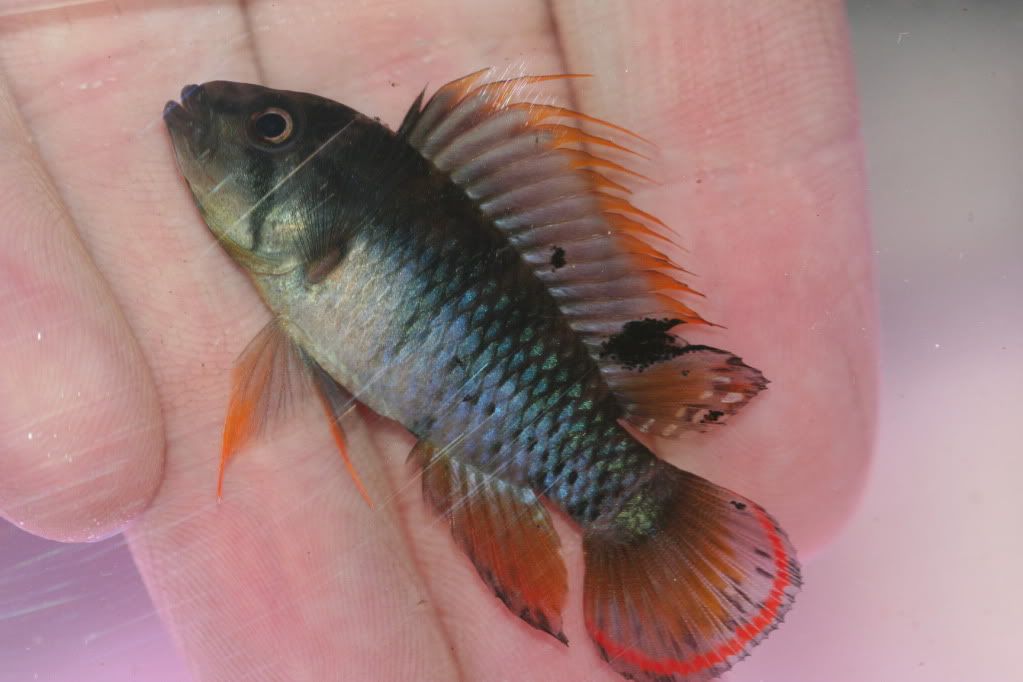
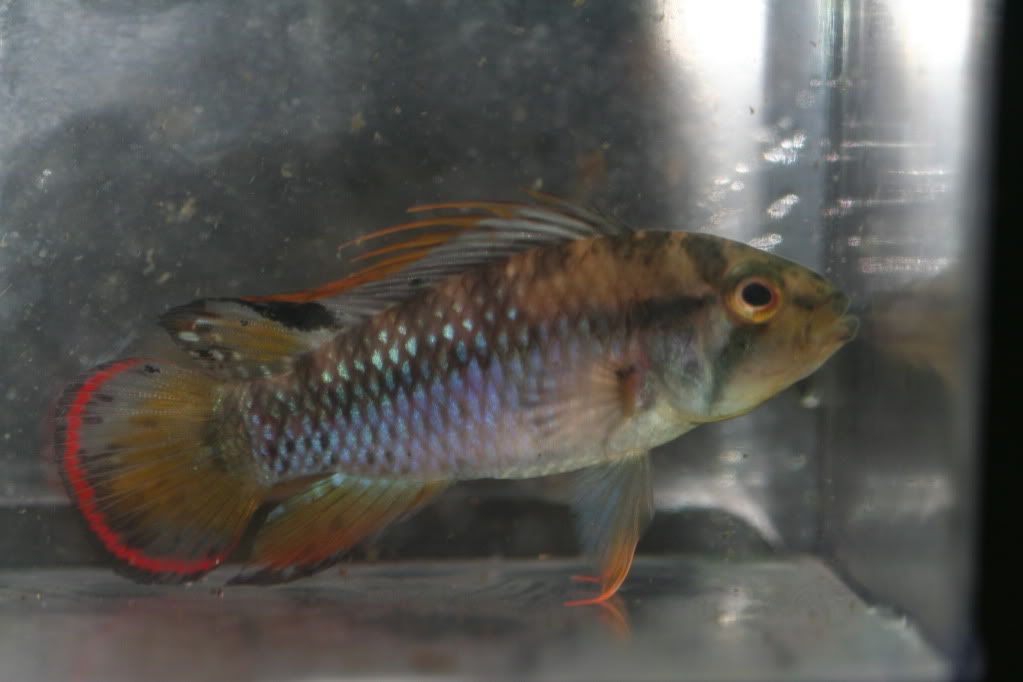
Female (please note the black leading edge on the ventral fins)
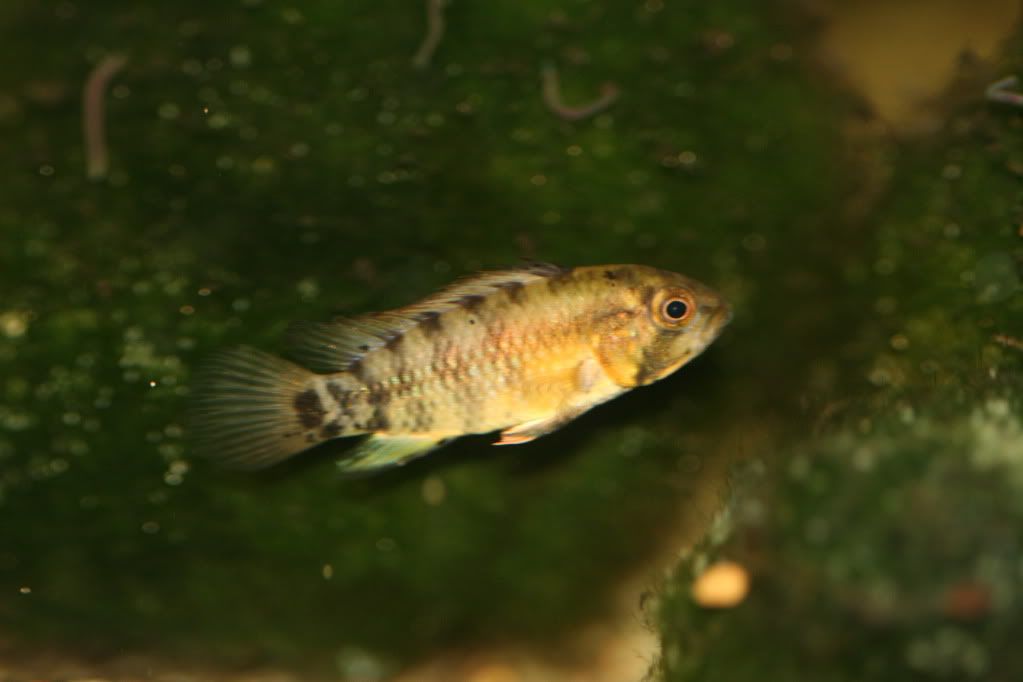

Don't worry about degrading the genetic quality of my fish! These guys will be just fine with your fish. But thank you for your concern. I'm nor sure how the discussion went from Ben asking if he had a male and female baenschi all the way to bashing the quality of my fish (which neither of you have at this point). Dave, please keep things civil before I get truly upset. The quality of your fish is not in question (and again...I'm not sure why the quality of my fish is being slammed). Only the question of the sex of the fish is being questioned. Personally I view that as a great opportunity for you, Dave, to share your vast experience and wisdom with keeping and working with the fish and teach the rest of us how to properly sex the fish by the same means you are using. You state it's a pair. OK. Why get upset about it? Time will quickly prove what sex the fish are. No need to get this upset about it and throw a fit. Just let the fish prove you right!
F30 Dave? Would that be generations removed from the first time the fish was exported? That might be close. A little high I think, maybe more like F20, but not out of the realm of possibility.
The fish Ben contacted me about are wild caught A. baenschi that were sent up by Mr. Panduro. I agree with you that the exact colors and to an extent marking will vary from collection point to collection point. I remember back in the early 1990's getting panduro and nijsseni in at the same time along with a third "species" of fish that looked to be an intermediate between the two other species! All wild caught fish and all exported seperetly from each other (each imported as it's own distinct fish).
Below are a few pictures of the baenschi stock I've been bringing in. The male would not come out and pose so I had to pull him out of the tank. Trashed his colors but at least you get an idea of what he looks like. And please pardon the "Peru Black Spot" that he has. A feature common to see in wild Apistos out of Peru that does not show up in their offspring in my experience.
Male (please note the lack of black coloration on the leading edge of the ventral fins)




Female (please note the black leading edge on the ventral fins)


